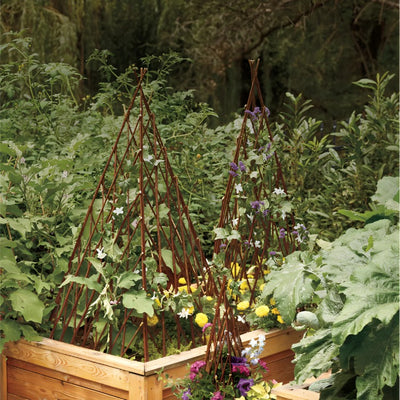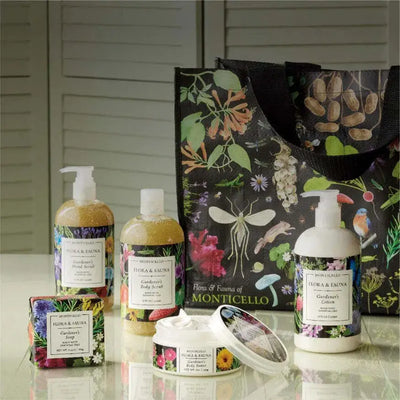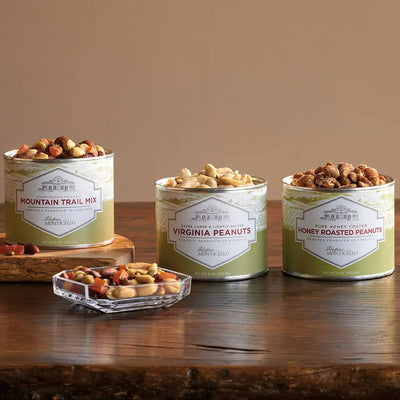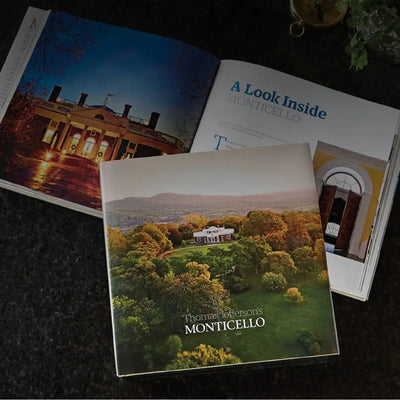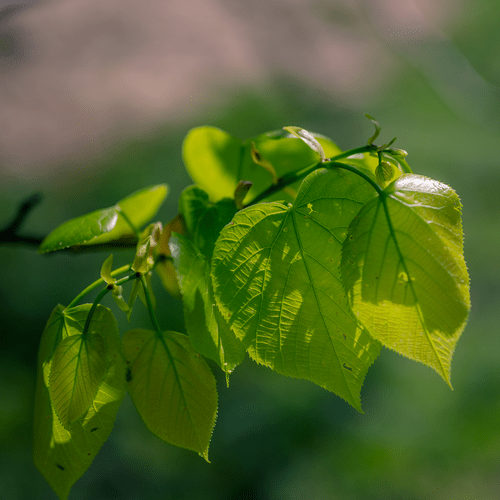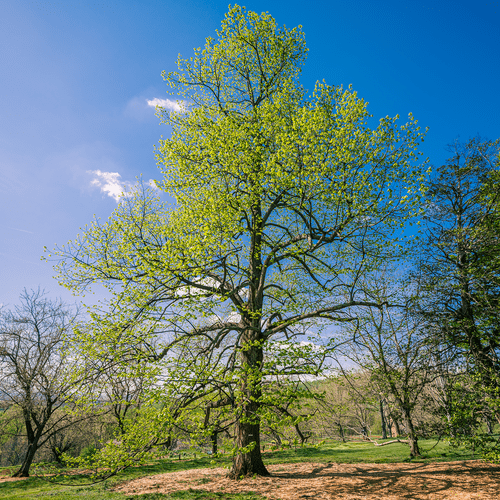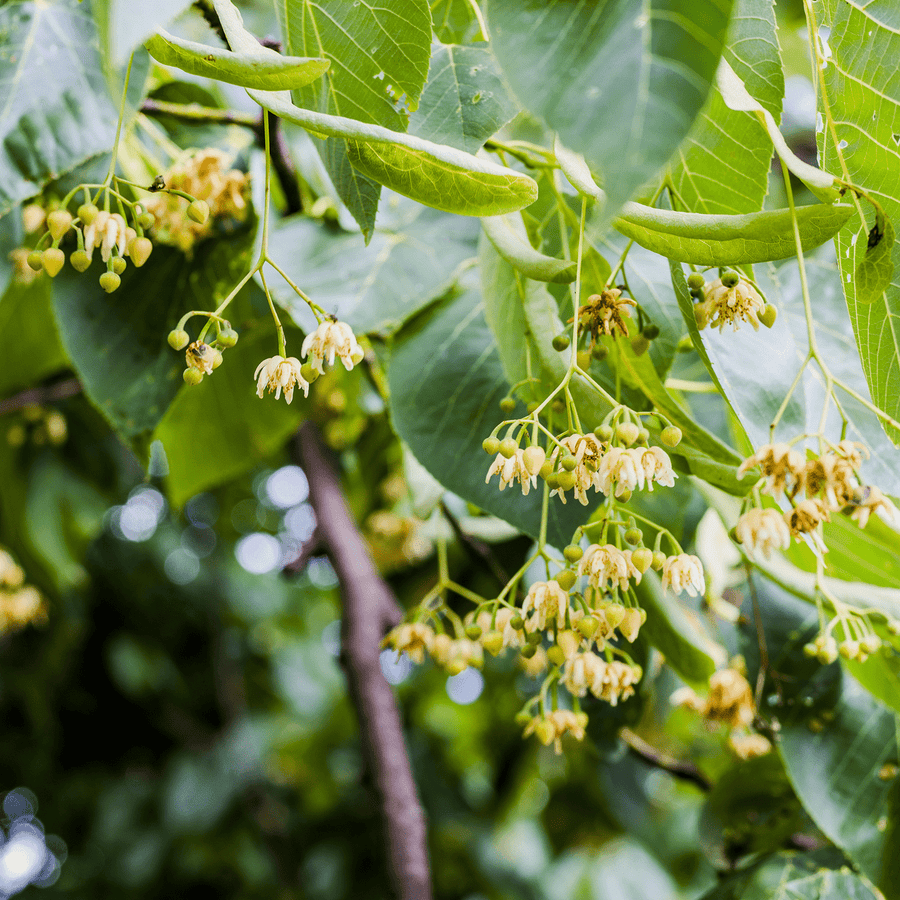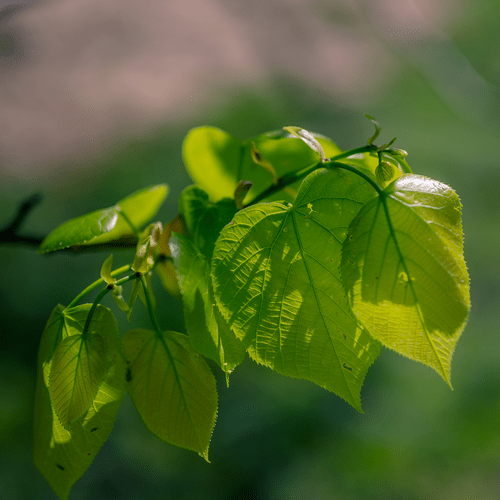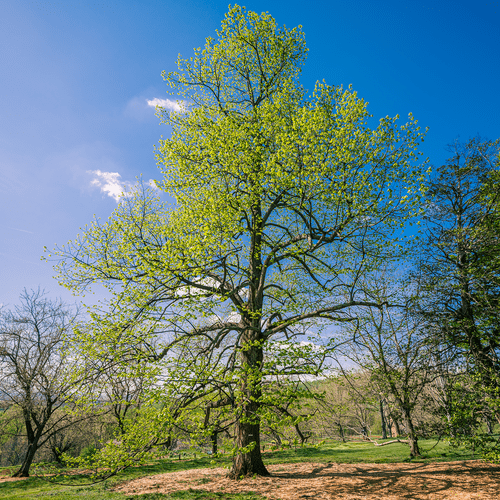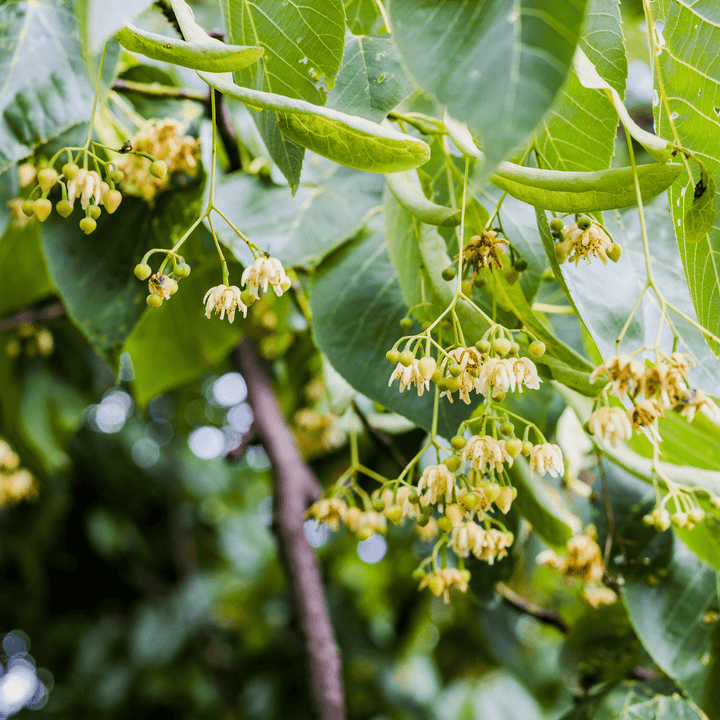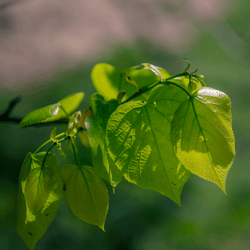Hardy, deciduous, Eastern North American tree
Large, dark green, ovate leaves up to 6” with silvery undersides; in early summer, an abundance of small, fragrant, yellowish flowers are paired with papery, leaf-like bracts; small, round, hard fruits form after the flowers
Origin: Eastern North America
Native to a wide range of growing conditions in Eastern North America, this handsome, useful species has long been harvested for its fibrous inner bark and soft, light wood. The flower nectar is very attractive to bees and makes a fine honey, hence the common name Bee Tree, while the dried flowers are used in tea. Thomas Jefferson included “Linden, or lime. Tilia Americana” as an ornamental native in his book, Notes on the State of Virginia (1782).
Arrives in a 2 gallon pot.
Details
| Genus | Tilia |
|---|---|
| Species | americana |
| USDA Zones | 2 - 8 |
| Exposure | Full Sun to Light Shade |
| Habit | Grows 50 to 80-feet high and 30 to 50-feet wide; dense crown becomes rounded with age |
| Culture | Prefers moist, well drained, fertile soil; tolerates some drought |
| Attributes | Attracts bees/butterflies, Drought tolerant, Fragrant |
| Jefferson documented | |

